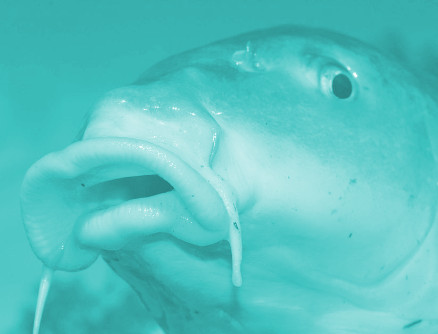Carp options open in QLD
 Authorities are working through options in what could be Australia’s first carp herpes release site.
Authorities are working through options in what could be Australia’s first carp herpes release site.
Experts are considering introducing a herpes virus to reduce the number of carp, which have been devastating to native aquatic life in Queensland’s Logan and Albert rivers.
The Biosecurity Act 2014 classifies carp as a restricted noxious fish, meaning it cannot be kept, fed, given away or released into the environment without a permit.
Carp were first introduced to Australian waters as a sport fish in the 1800s, and have thrived because of their ability to tolerate extreme temperatures - from 4 degrees to 40 degrees Celsius - as well as low oxygen and very little water, extracting nutrients from sediment and algae.
Since the release of the National Carp Control Plan at the end of 2022, state and federal governments have been working on plans to activate the herpes virus without affecting the environment.
They plan to introduce a common carp virus that is normally passed by the carp contacting each other, and causes infected fish to die within days.
But University of Queensland School of Biological Sciences researcher Andrew Barnes says there are some key details and tests to work through first.
“Most viruses and hosts adapt over time, so it's not a sure-fire solution, and the carp herpes may very well become Murray River cod virus,” Dr Barnes has told reporters.
“Natural systems are complicated, and you can't replicate them in a testing situation.”
There is a risk that the virus would work too well, leaving mounds of dead fish.
“In a localised area with a lot of carp, the virus would cause problems as the dead carp would decay, and would knock the water quality down, lower the oxygen, and increase ammonia, which is toxic in the water,” he said.
“These impacts could take out a lot of native fish and other aquatic animals from the drop in the water quality.
“If the virus is introduced, the dead carp would need to be removed every day so that they don't continue to impact the native species.
“This means the effectiveness as a biocontrol agent might not be quite as good as hoped or expected.
“It can't be predicted how quickly or how many fish the virus might kill in a natural system.
“There will be a whole bunch of variables that will impact that.”
The Logan and Albert Fish Management Association says the two Queensland rivers certainly have outsized carp populations.
Biosecurity Queensland says the National Carp Control Plan is still a work in progress, and significant issues need to be addressed before a decision on the release of the virus is made.
“This may include further research on the safety of the virus to non-carp species, regulatory approvals, agreement from all relevant jurisdictions, and extensive stakeholder consultation,” a spokesperson said.
“The government supports, in principle, using biocontrol methods to manage invasive pests.”








 Print
Print